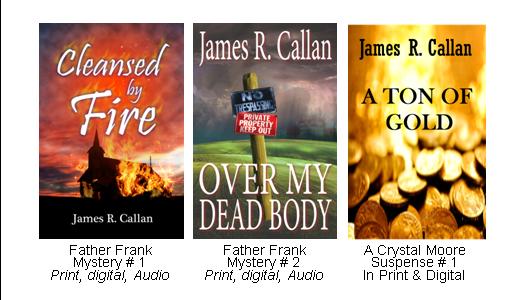Many years ago, I was teaching in a private school. One year I was sponsor of what many of the faculty labeled as the most difficult of the senior classes. Actually, I found them to be a very energetic and imaginative group, perhaps less concerned with the rules than most, and certainly less studious. But they were interesting, fun and goodhearted. I never had a problem with any of this class.
I never had a problem with any of this class.
So it was no great surprise when they proposed holding a greased pig chase as a fund raiser. I raised a number of objections, but they countered each with a reasonable answer. After seeking approval from administration, a date was set.
One boy in the class had an uncle who raised pigs, so that was taken care of. Posters were made. In fact, those in charge of publicity were very innovative . One day they were more animated than usual. The greased pig chase was being publicized on the local radio station most popular with high school kids. However, only students from our school could participate in the chase.
Entries began immediately ,with an amazing number coming from the freshman class. Briefly, I wondered if there was any coercion, but dismissed that thought. In fact, the whole school was buzzing about the upcoming porker party.
The day before the event, I received a call from an animal rights group. They were concerned about the safety of the pig. I thought to dismiss that thought also. The pig was soon to be shipped off to the packing house which would be a much worse experience than being chased by screaming teenagers. But the animal advocate was very serious. I explained that the pig would not be harmed. Once caught and secured by one or more students, he would be quickly returned to his home on the range. The contestants were allowed no tools, no aids at all. They must catch the pig using only their hands, and maybe their feet. Instantly, the pig’s protector worried that someone might kick the pig. I assured her no kicking was allowed.
What were we going to put on the pig? Well, it was a “greased” pig contest. I guaranteed her it would be only natural products, quite possibly coming from the pig’s ancestors.
 “This might be too tiring for the pig,” she continued. “I must insist you allow a rest period every five minutes.” I suggested every fifteen minutes and we ultimately compromised on ten minutes. I wondered how effective this would be. Would the pig understand a rest period?
“This might be too tiring for the pig,” she continued. “I must insist you allow a rest period every five minutes.” I suggested every fifteen minutes and we ultimately compromised on ten minutes. I wondered how effective this would be. Would the pig understand a rest period?
The day finally arrived and Joe drove his truck in with a very sturdy cage in the back containing… The Pig. To many, it looked like a wild boar. It snorted and banged against the cage, and several of the small freshmen began to have doubts about chasing this wild animal. Some worried the razorback might chase them instead.
The class committee decided to use vegetable oil to grease the swine, assuring the pig would be very hard to hold. Ten minutes before start time, students lined up behind a rope marking the starting line, and Joe and two classmates poured corn oil on the shoat, who didn’t care for the attention. Hands would pop in and spread the oil and jerk back before the pig could bite.
 Though close to eighty students had signed up, there were probably only fifty on the starting line. Possibly some had second thoughts after seeing this ferocious looking bovine. But there were probably another two hundred and fifty spectators. On the count of three, the rope was dropped and the door to the cage thrown opened.
Though close to eighty students had signed up, there were probably only fifty on the starting line. Possibly some had second thoughts after seeing this ferocious looking bovine. But there were probably another two hundred and fifty spectators. On the count of three, the rope was dropped and the door to the cage thrown opened.
Porky just stood there.
After railing against the cage, it didn’t want to leave. Joe grabbed a pencil out of his shirt pocket, reached in the cage, and jabbed the pig in its hindquarters. The bore took off. And as the contestants started running and screaming, the pig kept running.
Two or three students got a hand on the porker, but the slippery oil let the swine escape. Several dove at the pig and got nothing but a handful of grass. However, twin brothers had devised a plan and simultaneously dove at the pig from opposite sides. As the greasy bovine slipped out of one twin’s hands, it put him in the brother’s arms.
In three minutes, the contest was over. The twins held the oil covered pig down for the required thirty seconds and were declared the winners.
This special class had once again deviated from the norm. During the week leading up to the event anticipation saturated the school and grabbed the attention of the entire student body and most of the faculty.
And though the contest was very short, everyone in attendance seemed to have a great time.
Except, perhaps, the pig.
James R. Callan
Callan is no longer teaching. He writes mystery and suspense novels. Thus far, none has featured a wild pig, with or without grease. But he’s not ruling that out.


 Crystal Moore Suspense book #1, is FREE. Check it out at
Crystal Moore Suspense book #1, is FREE. Check it out at  don’t have the abundance of coin operated, self serve laundromats. And often, to have the laundry done at a commercial shop may take longer than we will be in that town. We tend to stay away from home for long periods, but to stay in one town only a short period. Ah, the little problems. We need to plan ahead and decide that since we are planning on being in this town for five days, we can send the laundry out.
don’t have the abundance of coin operated, self serve laundromats. And often, to have the laundry done at a commercial shop may take longer than we will be in that town. We tend to stay away from home for long periods, but to stay in one town only a short period. Ah, the little problems. We need to plan ahead and decide that since we are planning on being in this town for five days, we can send the laundry out. need to do some laundry. And after checking around, we found a laundry (not self-serve) that would do the laundry for you and return it the next day. Great. My wife, Earlene, explained in her best Spanish, no planchada. No ironing. She tried again. No planchas. You don’t iron.
need to do some laundry. And after checking around, we found a laundry (not self-serve) that would do the laundry for you and return it the next day. Great. My wife, Earlene, explained in her best Spanish, no planchada. No ironing. She tried again. No planchas. You don’t iron.
 16 novels, including six in his Sticks Hetrick crime series, plus a non-fiction regional history. His short stories and articles have been published in a variety of magazines. He is a member of International Thriller Writers and is a past vice president of the Short Mystery Fiction Society. He currently serves as librarian of his county historical society, where he assists patrons with genealogy and research
16 novels, including six in his Sticks Hetrick crime series, plus a non-fiction regional history. His short stories and articles have been published in a variety of magazines. He is a member of International Thriller Writers and is a past vice president of the Short Mystery Fiction Society. He currently serves as librarian of his county historical society, where he assists patrons with genealogy and research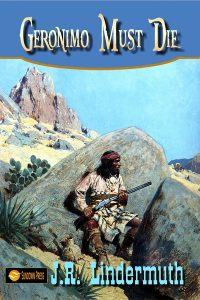
 early animated movies when each scene would require twenty-four graphic panels for a single second of a movie. Steve lives in Newport, Oregon and teaches at Newport High School. Steve writes short stories (has won the NETWO short story contest one year) and in 2016, published a young adult novel about teenagers finding a … well, I’d better let Steve tell you.
early animated movies when each scene would require twenty-four graphic panels for a single second of a movie. Steve lives in Newport, Oregon and teaches at Newport High School. Steve writes short stories (has won the NETWO short story contest one year) and in 2016, published a young adult novel about teenagers finding a … well, I’d better let Steve tell you.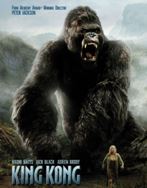 ring circus or screaming carnival ride. But when Kong, shaggy, bleeding, and defeated, let go and fell one hundred and two stories to the Manhattan pavement, I lost it, son, flipped out, crying and screaming so loudly that my dad thought a police car, old-style siren blaring, had pulled up in our front yard. The King was dead and I was not happy about it. Dad consoled my by explaining that Kong wasn’t dead – because he’d never really been alive. It had all been a trick. A special effect.
ring circus or screaming carnival ride. But when Kong, shaggy, bleeding, and defeated, let go and fell one hundred and two stories to the Manhattan pavement, I lost it, son, flipped out, crying and screaming so loudly that my dad thought a police car, old-style siren blaring, had pulled up in our front yard. The King was dead and I was not happy about it. Dad consoled my by explaining that Kong wasn’t dead – because he’d never really been alive. It had all been a trick. A special effect.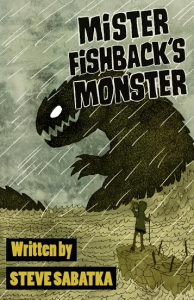 my heroes and all their frame-by-frame voodoo. So I wrote a young adult novel about a teenage monster nerd (me, basically), and his two oddball buddies – a Vietnamese refugee, and a 250 pound wrestler – trying to explain the scaly, hairy, multi-toothed horror that has just washed up dead on the Oregon Coast.
my heroes and all their frame-by-frame voodoo. So I wrote a young adult novel about a teenage monster nerd (me, basically), and his two oddball buddies – a Vietnamese refugee, and a 250 pound wrestler – trying to explain the scaly, hairy, multi-toothed horror that has just washed up dead on the Oregon Coast.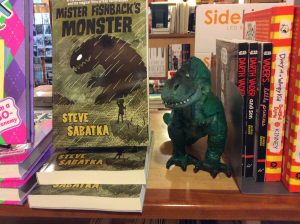
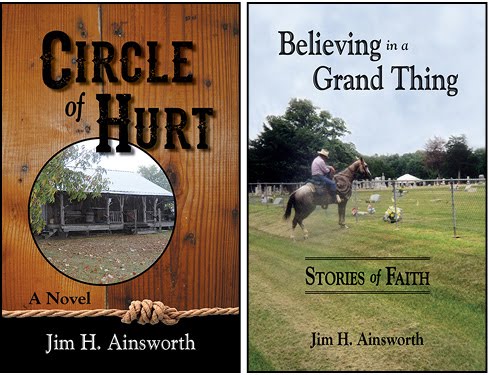
 room that could be converted into two good sized bedrooms. We needed to remodel one of the bathrooms and completely redo the kitchen – new cabinets, new hot water heater, and on and on.
room that could be converted into two good sized bedrooms. We needed to remodel one of the bathrooms and completely redo the kitchen – new cabinets, new hot water heater, and on and on. We didn’t know what to think. We had come from Texas in a small Ranger pickup. Space didn’t allow for many tools, and certainly nothing large. Still, there were several power tools that would be a little expensive to replace.
We didn’t know what to think. We had come from Texas in a small Ranger pickup. Space didn’t allow for many tools, and certainly nothing large. Still, there were several power tools that would be a little expensive to replace.


 but especially mystery and fantasy.
but especially mystery and fantasy. because she wanted to go as the headless horseman for Halloween. I know how she defends those being bullied, her soft spot for animals, and how much she loves settling in front of a fire with a cup of hot cocoa. She’s a person I’d really like to hang out with.
because she wanted to go as the headless horseman for Halloween. I know how she defends those being bullied, her soft spot for animals, and how much she loves settling in front of a fire with a cup of hot cocoa. She’s a person I’d really like to hang out with. Another thing I love is when a character just appears and refuses to disappear. While writing Dragons of Jade, I was typing along in the groove, and a dog appeared in a scene. I didn’t want a dog in the book so backspaced and deleted him. A few sentences later, my character opened the door and in bounded the dog. He had a name, a personality, and I knew exactly what he looked like. I thought about deleting him again but just couldn’t. Turns out, he was an important part of the story.
Another thing I love is when a character just appears and refuses to disappear. While writing Dragons of Jade, I was typing along in the groove, and a dog appeared in a scene. I didn’t want a dog in the book so backspaced and deleted him. A few sentences later, my character opened the door and in bounded the dog. He had a name, a personality, and I knew exactly what he looked like. I thought about deleting him again but just couldn’t. Turns out, he was an important part of the story. heir jobs, their culture, and just what makes them tick. Then, we hang out in front of the fireplace sipping hot cocoa and telling stories.
heir jobs, their culture, and just what makes them tick. Then, we hang out in front of the fireplace sipping hot cocoa and telling stories. fifty miles across the Bass Strait from Melbourne, Australia. It was discovered in 1642 by a Dutchman named Abel Tasman, but there were a number of Aboriginal tribes there when the British came to settle it in the late 1700s. At the time we were there, the population was just over half a million people.
fifty miles across the Bass Strait from Melbourne, Australia. It was discovered in 1642 by a Dutchman named Abel Tasman, but there were a number of Aboriginal tribes there when the British came to settle it in the late 1700s. At the time we were there, the population was just over half a million people.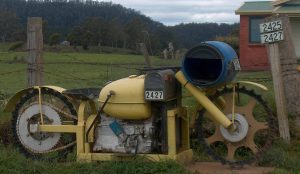 Until recently, fully one third of the island was in a protected forest, with no roads, no villages to disturb the natural beauty. In the last couple of years, some timber companies have been allowed into this area (a mistake in my opinion).
Until recently, fully one third of the island was in a protected forest, with no roads, no villages to disturb the natural beauty. In the last couple of years, some timber companies have been allowed into this area (a mistake in my opinion).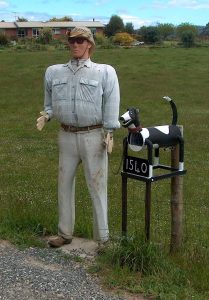
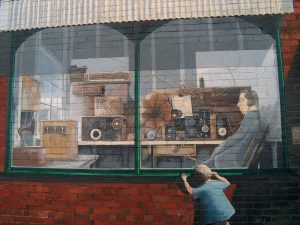 the midst of this, we came upon the town of Sheffield, often called Tasmania’s Outdoor Art Gallery. If we found a building with an exposed side wall, we would find a mural. The first mural in Sheffield was commissioned in 1986. Many of the pictures give aspects of the history of the town and Tas. We could not count all of the murals, but there must have been close to a hundred walls colorfully decorated.
the midst of this, we came upon the town of Sheffield, often called Tasmania’s Outdoor Art Gallery. If we found a building with an exposed side wall, we would find a mural. The first mural in Sheffield was commissioned in 1986. Many of the pictures give aspects of the history of the town and Tas. We could not count all of the murals, but there must have been close to a hundred walls colorfully decorated.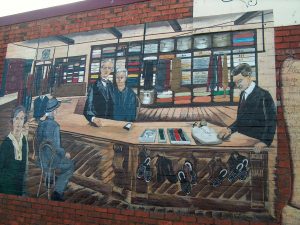 Keep in mind that Sheffield is a small town of approximately 1,400 people. However, it has become a major tourist attraction, with an estimated 200,000 visitors each year.
Keep in mind that Sheffield is a small town of approximately 1,400 people. However, it has become a major tourist attraction, with an estimated 200,000 visitors each year. carved and the amazing use of hydro electric generation in Tasmania. Oh, and we must not forget the Tasmania Devils, the only thing we knew about the island (thanks mostly to Walt Disney)before we visited it.
carved and the amazing use of hydro electric generation in Tasmania. Oh, and we must not forget the Tasmania Devils, the only thing we knew about the island (thanks mostly to Walt Disney)before we visited it.